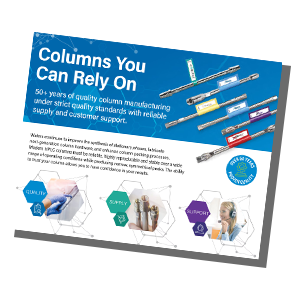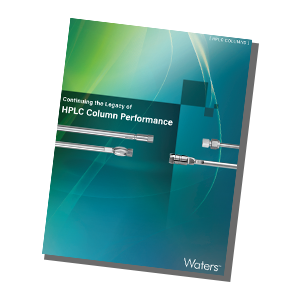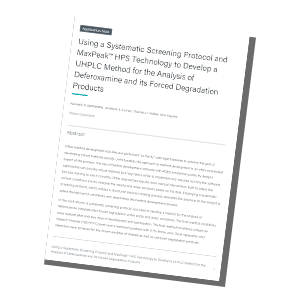
Successful chromatographic separations are as much about preventing the interactions you don’t want, as it is creating the interactions you need. This course is designed to take you from beginner to advanced in controlling the interactions within your chromatographic separations. It will cover how to improve method robustness through the prevention of analyte loss, with improved confidence in the quality of your data.
The full course includes six tutorials, including:
- Introduction to non-specific binding and non-specific adsorption
- Common approaches and newer innovations to prevent non-specific adsorption
- Improving reproducibility and reducing column conditioning through control of non-specific adsorption
- Improving sensitivity and peak shape through control of non-specific adsorption
- Column selection in a world with non-specific adsorption
- Simplified method development with risk mitigation against non-specific adsorption
Once you complete all the tutorials in this module, including answering all the quiz questions correctly, you will receive a certificate of completion. Now that you’ve learned about controlling unwanted interactions, be sure to check out our other module “Understanding LC Column Attributes: What’s Important for Your Chromatography” to learn about how particles and ligands can maximize separations.
Plus, download these additional resources
 [Infographic] Columns You Can Rely On — This infographic describes quality column manufacturing under strict quality standards with reliable supply and customer support.
[Infographic] Columns You Can Rely On — This infographic describes quality column manufacturing under strict quality standards with reliable supply and customer support.
 [Brochure] HPLC Columns — Waters’ full line of state-of-the-art, reversed-phase and HILIC HPLC columns are chosen by scientists who understand that performance and innovation are linked and their success depends on them.
[Brochure] HPLC Columns — Waters’ full line of state-of-the-art, reversed-phase and HILIC HPLC columns are chosen by scientists who understand that performance and innovation are linked and their success depends on them.
 [Application Note] Using a Systematic Screening Protocol and MaxPeak™ HPS Technology to Develop a UHPLC Method for the Analysis of Deferoxamine and its Forced Degradation Products — Employing a systematic screening protocol, which utilizes a structured decision-making process, alleviates the pressure on the analyst to select the best set of conditions, and streamlines the method development process.
[Application Note] Using a Systematic Screening Protocol and MaxPeak™ HPS Technology to Develop a UHPLC Method for the Analysis of Deferoxamine and its Forced Degradation Products — Employing a systematic screening protocol, which utilizes a structured decision-making process, alleviates the pressure on the analyst to select the best set of conditions, and streamlines the method development process.
The Presenter Kim Haynes is Director, Chemistry Marketing and Product Management, in the Chemistry Technology Center at Waters Corporation. Kim manages MaxPeak High Performance Surface Technologies as well as a variety of other programs. Prior to this position, she has worked with Waters Corporation as a chemistry sales specialist and a business development manager. During her 21 years at Waters, Kim has focused on helping scientists and colleagues understand chromatographic separations and sample preparation. Before joining Waters Corporation, Kim worked as an analytical chemist at Bacardi Martini. She holds a BS in Chemistry from Ohio University. She can be contacted at kim_haynes@waters.com
Kim Haynes is Director, Chemistry Marketing and Product Management, in the Chemistry Technology Center at Waters Corporation. Kim manages MaxPeak High Performance Surface Technologies as well as a variety of other programs. Prior to this position, she has worked with Waters Corporation as a chemistry sales specialist and a business development manager. During her 21 years at Waters, Kim has focused on helping scientists and colleagues understand chromatographic separations and sample preparation. Before joining Waters Corporation, Kim worked as an analytical chemist at Bacardi Martini. She holds a BS in Chemistry from Ohio University. She can be contacted at kim_haynes@waters.com